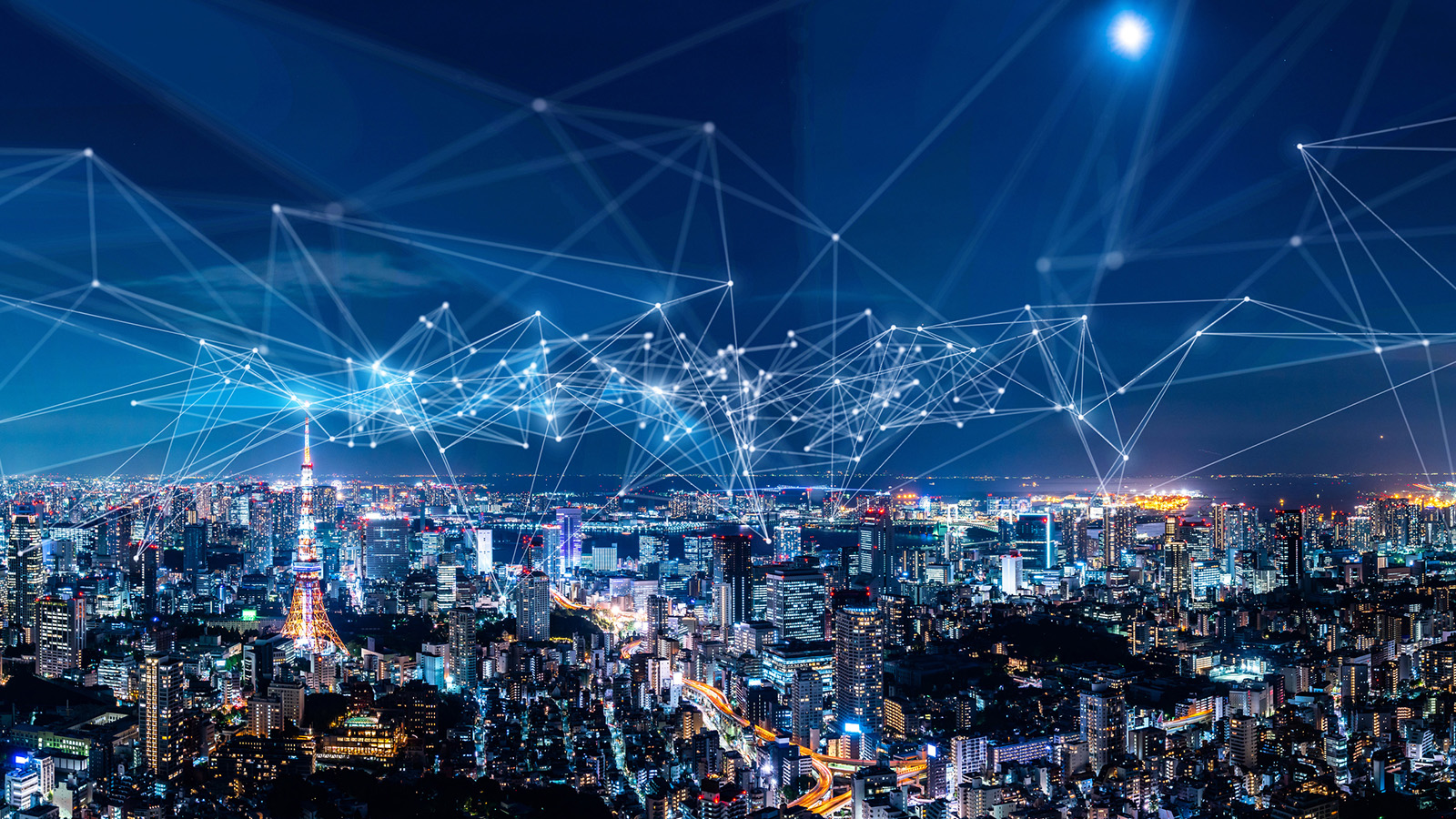Smart Cities: The Future Is Here, But Are We Ready?
01 Jun 2023
Smart cities deploy data and digital technology to improve urban dwellers' quality of life. These cities rely on various methods and sensors to gather data, and use the insights gained to manage re-sources and services more efficiently.
The advantages of making our cities smart are numerous and wide reaching. Dense urban areas are highly complicated and the provision of services such as waste management, transportation and healthcare these can be costly and patchy. However, as with any change, user participation is a prerequisite. Therefore, the user experience is paramount.
History of smart cities
The concept of smart cities sprung up on the radar around 2000, when MIT Professor Kevin Ashton introduced the concept of the smart grid. Over the subsequent 10 years, other researchers identified new ways to make cities more environmentally friendly. A driving factor behind this interest was that the rapid increase in population and environmental pressure required improved utilization of resources such as water, energy, and waste. Following the success of the smart grid, the concept of smart cities has evolved to include the concept of the smart building. This wave of interest was further expanded in 2010 when a group of researchers led by Gifford Miller at IBM proposed a detailed strategy to transform cities.
Kevin Ashton coined the term “the Internet of Things” in 1999 and is the author of “How to Fly a Horse—the Secret History of Creation, Invention, and Discovery,” which was named 2015’s Business Book of the Year by 800-CEO-READS. He was also the co-founder and former Executive Director of the Massachusetts Institute of Technology Auto-ID Center; the co-founder and CEO of Zensi, which developed Internet of Things technology to reduce energy and water consumption; and the creator of the Wemo home automation platform.
The tech behind smart cities
Smart city services are designed to address the many challenges inherent in our cities. There are several technologies and services that are being used to make our cities smarter.
For example, the IoT sensor can gather information, such as temperature and humidity, and then relay this information back to a smartphone or PC. The information from smart sensors can be used in a variety of ways, such as better monitoring of water levels in public buildings, monitoring air quality in airports, optimizing fleet usage, or even helping people navigate buildings. Smart sensors can also be used for security, such as via the deployment of CCTV.
Smart IoT car park sensors illustrate this point well. In Hong Kong, car parks typically deploy a card reader at the their entrance and exit. Whereas the card reader system only tracks vehicles as they enter and leave, smart sensors monitor the whole car park and are able to provide bay tracking, multi-floor tracking, and parking bay statistics for individual spaces. Analysis of the big data provided during off-peak and peak times is used to inform marketing optimization and promotions, and the data can be visualized to provide improved information for car park users.
The user experience
Unlike traditional urban planning, smart cities provide services and programs that can be operated in real time through digital systems. Cities like Madrid are already leveraging this technology to manage water waste, provide electric vehicle charging stations, and manage parking lots. Additionally, with the ability to track consumption and power usage in real-time, smart cities can become a test lab for cost and energy efficiency, infrastructure optimization, and resiliency. Cities such as Copenhagen have even established smart streetlights that alert drivers when their electric vehicle's charge level dips to a dangerous level.
What we can expect from smart cities in the future
From physical services to the digital experience, smart city transformation will be as diverse as the experiences of our daily lives. New services such as e-commerce and fintech will be more extensively deployed in smart cities. Digital solutions will be leveraged to offer personalization and differentiation to our services and lifestyles. The impact of these digital technologies can be gauged by the sheer number of Internet-connected devices in a household. Moreover, when it comes to technological advancements, smart cities will become an extension of the digital life we already live today. Computers, the Internet of Things, and smart devices are advancing at an exponential rate and the integration of these devices will increase and deepen in the near future.
From physical services to the digital experience, smart city transformation will be as diverse as the experiences of our daily lives.
Blockchain and IoT in smart cities
Blockchain has many benefits over other distributed ledger technologies such as Hyperledger Fabric. Blockchain can be used for purposes such as tracking trade documents and property rights records. This, in turn, enhances efficiency and reduces costs. Smart cities can also benefit from integrating IoT into their systems. IoT collects data on current consumption patterns and waste generation. This enables the management of resources such as electricity and water more efficiently.

Augmented reality and the future of smart cities
A new wave of AR-based platforms have emerged as a means for individuals to design and build their very own Smart cities from start to finish. The key component of these AR platforms is their advanced software, which allows users design a smart city in VR, with ease, and determine how services can be delivered. 3D models of the city designed can be installed on a mobile phone. This allows the user to explore the city and see its different features and different services.
The challenge for city planners is in selecting the right smart solutions, investing in them and managing them.
Final thoughts
By leveraging smart technologies, cities can dramatically improve the quality of urban life and deliver cost-effective solutions. The good news is that this technology is gaining popularity and existing smart technologies are getting more accessible to city dwellers. For instance, even in the realms of mobility and communications, with the support of wireless networks, technologies are enabling easy remote management of vehicles and linking them with other transport systems, providing new solutions for reduced car ownership, connected car options, and improved efficiency. The challenge for city planners is in selecting the right smart solutions, investing in them and managing them. The right smart city technology solution has to be created with the right amount of resources.

